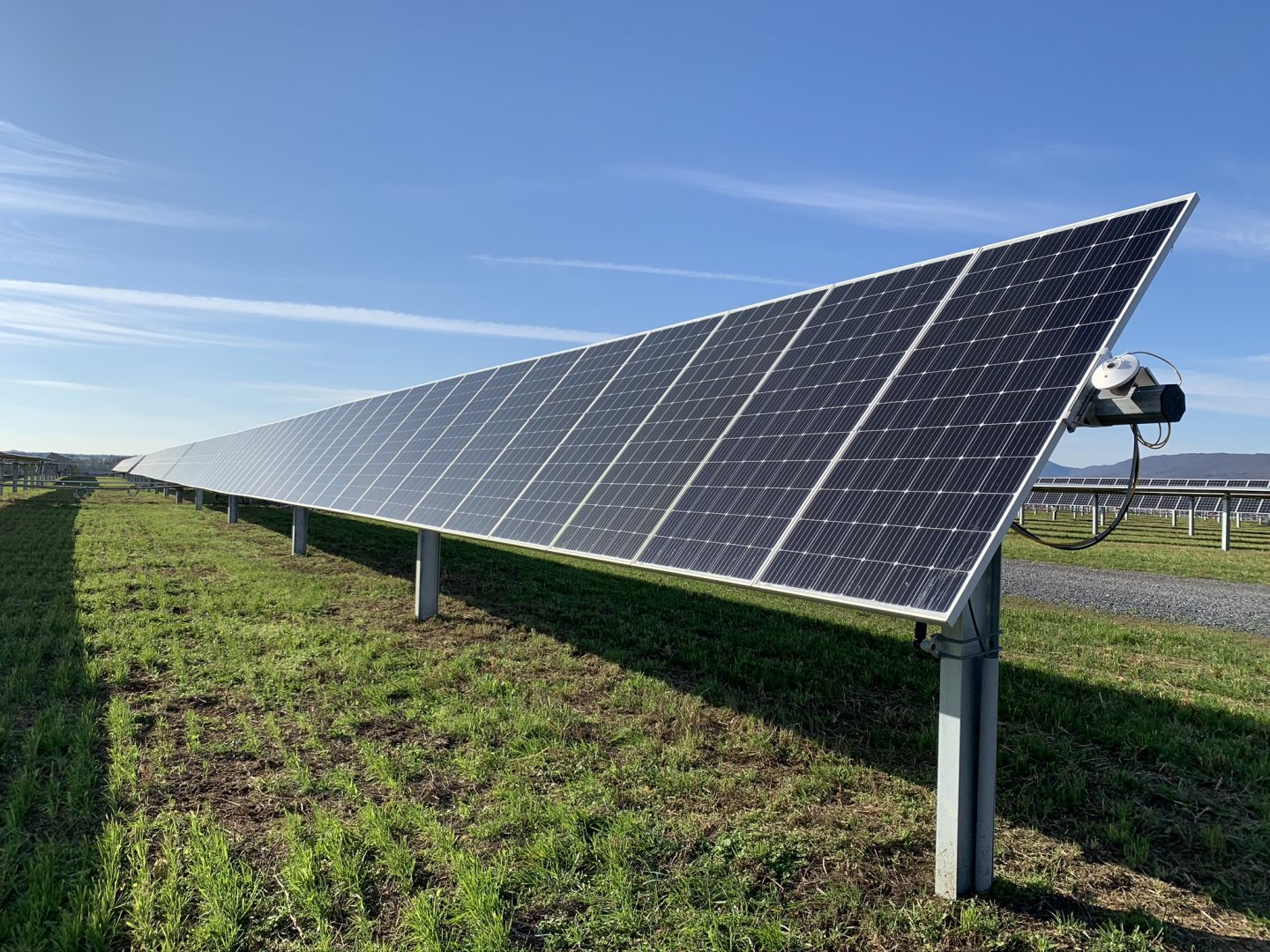
A solar array at the Nittany 1 Solar Farm is seen here in Lurgan Township, Franklin County on Nov. 24, 2020.
Rachel McDevitt / StateImpact Pennsylvania


A solar array at the Nittany 1 Solar Farm is seen here in Lurgan Township, Franklin County on Nov. 24, 2020.
Rachel McDevitt / StateImpact Pennsylvania

Rachel McDevitt / StateImpact Pennsylvania
A solar array at the Nittany 1 Solar Farm is seen here in Lurgan Township, Franklin County on Nov. 24, 2020.
Pennsylvania’s goals for utilities to buy increased amounts of power from alternative sources, such as wind and solar, are set to flatline in 2021 unless the General Assembly acts.
Advocates for raising the standards say it will create jobs and help address climate change.
Pennsylvania’s Alternative Energy Portfolio Standards Act of 2004 set a series of targets for electricity generated by a range of sources, from solar to waste coal. Utilities are on track to meet the 2021 goal of 18 percent — with 8 percent coming from renewables.
Renewables Work for PA, a coalition of clean energy companies, wants to see the bar raised to 18 percent renewables by 2025.
Sharon Pillar with the coalition said without new goals, companies don’t have the incentive to build in the commonwealth.
“They’re not rushing to Pennsylvania because our policies are not going to make those projects work as easily,” said Pillar, who is also the executive director of Pennsylvania Solar Center, a nonprofit that aims to help people and businesses switch to solar.
Meanwhile, neighboring states have set much higher targets. New Jersey and Maryland are shooting for 50 percent renewable energy by 2030.
Bipartisan measures to raise renewables standards were introduced in the legislature last session, but most died in committee. One, led by Democrats, would have set a goal of 30 percent renewable electricity by 2030. Another suggested 18 percent by 2025.
John Walliser, senior vice president of legal and government affairs for Pennsylvania Environmental Council, said the bills show there is an appetite to update the AEPS, but he thinks the pandemic shut out a lot of bills that weren’t related.
“There probably also was not yet the immediate sense of urgency in the fact that we hadn’t reached that plateau yet,” Walliser said.
Walliser’s group is pushing to overhaul the AEPS in favor of a Clean Energy Standard.
A CES would set an overall goal of zero-carbon electricity by 2050 and include more energy sources, such as nuclear and fossil fuels with carbon capture.
A spokesman for the House GOP said the caucus is developing legislative priorities for the coming session.
StateImpact Pennsylvania is a collaboration among WITF, WHYY, and the Allegheny Front. Reporters Reid Frazier, Rachel McDevitt and Susan Phillips cover the commonwealth’s energy economy. Read their reports on this site, and hear them on public radio stations across Pennsylvania.
(listed by story count)
StateImpact Pennsylvania is a collaboration among WITF, WHYY, and the Allegheny Front. Reporters Reid Frazier, Rachel McDevitt and Susan Phillips cover the commonwealth’s energy economy. Read their reports on this site, and hear them on public radio stations across Pennsylvania.
Climate Solutions, a collaboration of news organizations, educational institutions and a theater company, uses engagement, education and storytelling to help central Pennsylvanians toward climate change literacy, resilience and adaptation. Our work will amplify how people are finding solutions to the challenges presented by a warming world.